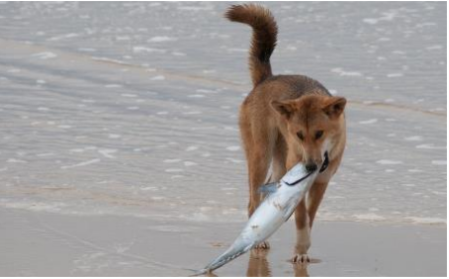High palatability and digestive tolerance of a new salmon hydrolysed protein-based diet in dogs

Introduction
Because most food allergens are thought to be proteins with molecular weights (MW) ranging from 10 to 70 kDa, hydrolysed-protein diets have been proposed for the diagnosis and management of food allergy (FA) in dogs.1-6 Hydrolysis of the native dietary protein is aimed to break it into free amino acids and small peptides, and thus reduce allergenicity and increase digestibility.1,3,4,6-8 While the main issue in case of partial hydrolysis is residual antigenicity and decreased efficacy, highly extensive hydrolysis may result in poor palatability and digestive tolerance due to the bitter taste and hyperosmolarity of amino acids.8
So the challenge, when formulating hydrolysed protein-based diets, is to combine effective level of hydrolysis and high tolerance for optimal compliance in vet practices.
Animals, materials and methods
Forty-two healthy adult client-owned dogs were recruited and monitored for 28 days. After a 4-day diet transition, they were fed exclusively with the new dieta (Table 1) characterized  by its protein source: an extensively-hydrolysed protein concentrate (mean MW: 1.7 kDa) extracted from fresh Atlantic farmed salmon (Figure 1). Owners filled in multiple-choice questionnaires on D0 (basal assessment with usual diets), D7, D14 and D28. a Virbac VETERINARYTM HPM Hypoallergy salmon dog
by its protein source: an extensively-hydrolysed protein concentrate (mean MW: 1.7 kDa) extracted from fresh Atlantic farmed salmon (Figure 1). Owners filled in multiple-choice questionnaires on D0 (basal assessment with usual diets), D7, D14 and D28. a Virbac VETERINARYTM HPM Hypoallergy salmon dog
To define the digestive safety of the diet, 4 criteria were assessed: faeces consistency, faeces odour, faeces quantity, and flatulence (Table 2). Owners then compared these parameters with basal assessments in order to describe any improvement or degradation in their dogs’ status. They also evaluated palatability and coat condition. Wilcoxon signed-rank and Mc Nemar’s tests were performed to compare each parameter at different times, with a significant threshold of 5%.

Result
The evolution of the digestive criteria is illustrated by Table 3. It shows that fecal quality was good and even improved vs usually in most dogs. The mean fecal score was similar (2.3 ±  0.4) on D28 and D0, none of the dogs presented diarrhoea during the study. Faeces odour significantly decreased as soon as the first week.
0.4) on D28 and D0, none of the dogs presented diarrhoea during the study. Faeces odour significantly decreased as soon as the first week.
Flatulence were uncommon throughout the study. 95% of dogs appreciated the new diet (Figure 2), and 67% of them preferred the new diet to their usual diet. Coat shine was improved in 43% of dogs on D28 in comparison with D0. Finally, 90% of owners declared to be satisfied with the hydrolysed diet and its effects on their dogs’ health status. High palatability was cited as the first strength of the product.
Conclusion
This study showed that the specific extensive hydrolysis performed on the salmon protein had no detrimental effect in dogs: the new diet was highly palatable and well tolerated. These characteristics are essential for optimal dog owners’ compliance in the management of FA.
References:
1Roudebush P et al. Small Anim Clin Nutr 2010. 2Gashen FP & Merchant SR. Vet Clin Small Anim 2011. 3Olivry T & Bizikova P. Vet Derm 2010. 4Ricci R et al. Vet Derm 2010. 5Bizikova P & Olivry T. Vet Derm 2016. 6Olivry T et al. BMC Vet Res 2017. 7de Rooij K. Vet Thesis Utrecht Univ 2016. 8Verlinden A et al. Crit Rev Food Sci Nut 2006.

